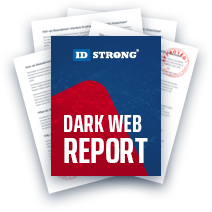What is a DeepFake? How Do You Spot One?
Table of Contents
- By Greg Brown
- Published: Aug 26, 2022
- Last Updated: Aug 31, 2022

Technology offers society an astonishing number of opportunities for advancement. How we choose to take advantage of these possibilities defines our future. Out of artificial intelligence and machine learning comes a potentially perilous or beneficial technology termed “DeepFake.”
DeepFake technologies have the opportunity for positive influences on society. However, dangerous exploitation follows as synthetic media, machine learning, and artificial intelligence become more advanced and widespread.
What is a DeepFake?
In 1997, scientists at Interval Research Corporation took their Video Rewrite program and used existing footage to create a new video. The unique footage was the same person mouthing different words. Video Rewrite was the original piece of software that fully automated facial animation.
It wasn’t until 2017 that the phrase DeepFake was first used by a Reddit user who went by the same name. The user created an online news and aggregation site using open-source face swapping technology.
Video composites, in use for decades, were the early steps in what was to become DeepFake. Composites are multiple layers of images combined to generate a final still. DeepFake technology extends the underlying premise of video composites.
Once the power and influence of DeepFake became clear, computer outlaws added the technologies that made it a global threat phenomenon.
The central element of DeepFake technology is machine learning (ML). ML allows DeepFakes to be produced faster and cheaper. Creators use images of a real person, then train a neural network with hours of video footage. Using this learning process gives the structure a realistic perception of how that individual appears at various angles and lighting conditions.
Generative adversarial networks (GANs) in a machine learning environment are used to become more accurate in their analysis. GANs are two neural nets competing with each other for accuracy.
Specialized computer graphics combine the trained network illustrations, which are then superimposed onto another person. The process is far from simple, and building a fictional composite of a person’s face takes considerable time. Designers must tweak system parameters repeatedly to eliminate blips in the image.
Neural networks solve challenging problems requiring significant computing capabilities combined with massive volumes of data. Research algorithms are applied to pattern the data in multi-layered networks. Deep learning is a machine understanding approach that builds accurate video results in less time than traditional programming.
Artificial intelligence has been added to the mix, speeding up the process.
Positive Applications Of the Technology
In recent years, DeepFake has garnered only dangerous implications. However, novel and innovative ideas exist for using DeepFake constructively.
- DeepFake can assist teachers in delivering a highly engaging lesson far beyond current visual compositions. Historical figures come to life, making lessons involved and fascinating.
- Influencers, human rights activists, and game developers use DeepFake to extend their reach across media formats. DeepFake is practiced in game development now.
- DeepFake is applied in several industries to engage customers. Clothing retailers show their clients how a dress, suit, or glasses looks on them before purchase.
Dangerous Side of DeepFake Technology
The Sherlock Holmes of Digital Misdeeds: Dr. Hani Farid, a computer scientist, is an authority in digital imagery analysis. Asked in 2017 about the DeepFake phenomenon, Farid’s sinister response was frightening.
“Yes, you should be terrified…the ability of technology to manipulate and alter reality is growing at breakneck speed.”
DeepFake is a powerful tool that erodes public confidence, fabricates evidence, and ruins a person’s reputation. Authorities must improve federal law regulating the technology, offering robust and active oversight.
- Corporate fraud is one of the most common attack techniques using DeepFake. Employees are influenced by a call from the CFO or CEO to transfer money via a bogus email.
- Extortion is a threat vector taken to a new level. Raiders blackmail company executives by threatening to send compromising DeepFake videos to the press.
- Fake News was coined just a few years ago and represented published headlines disrupting political, business, and social initiatives. The fraudulent news industry has done an outstanding job of sowing seeds of doubt and confusion.
Apps and software for producing DeepFake videos, images, and audio are growing exponentially without protocols or regulation. The lure of this technology is being recognized as a potent enabler. DeepFake gives people a voice while getting their message into the public discourse at the highest levels.
How to Spot DeepFake
The Pentagon and other government agencies consider themselves in a critical race to get ahead of DeepFake. Artificial intelligence has accelerated the war of disinformation. As the ability to make fake videos proliferate, governments are convinced some seek to weaponize the technology.
The Defense Advanced Research Projects Agency (DARPA) is the government’s initial line of response for controlling the threat of media manipulation. DARPA created the Semantic Forensics (SemaFor) initiative to get the upper hand in the battle between detectors and manipulators.
How to identify DeepFake is the eternal question. Regarding AI-manipulated media, there is no one size fits all approach. However, if you are trying to spot a DeepFake, here are some glitches to look for.
- High-end DeepFake videos are facial transformations. Pay close attention to the face for traces of discoloration and distortion.
- Cheeks and foreheads may appear too smooth or wrinkly. Does the skin’s age match the age of the hair and eyes?
- DeepFakes generally fail to illustrate the natural physics of a scene. Pay attention to shadows around the eyes and eyebrows. Look for shadows going the wrong way.
- When individuals move, look at the glare in their glasses. Does the glare move with the person, or is it motionless?
- Facial hair is invariably a dead giveaway for DeepFake. Is hair natural and positioned correctly, or is a mustache, beard, or sideburn missing?
Quality DeepFakes are tough to spot; with practice, a person can build an instinct for identifying what is fraudulent and what is authentic.
DeepFake has analysts around the globe focused on detection with artificial intelligence applications developed in-house. Brookings Institute and UC Riverside are just two research initiatives working to combat the menace of DeepFake technology.
Exploiting our inclination to trust what we see with our eyes is the disturbing outcome of trusting video without question. Political campaigns are coming under attack due to candidates saying something that is not in the script. Pornographic videos are another problematic and menacing side of DeepFake. Any person can fall victim to a vengeful attacker.
Ultimately, all the technological detection solutions, no matter how good they are, won’t prevent all DeepFakes from getting through. Public awareness must be part of an overall strategy to combat the technology. If an individual sees a video with inconsistent behavior, the validity of what they see must be taken into question.
If you worry that your data may be at risk, consider looking into identity monitoring services. It can give you more peace of mind while you take the time to learn more about protecting yourself from these types of attacks.



















































































































